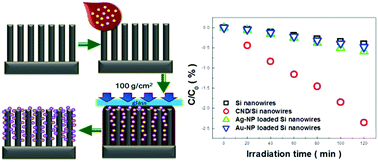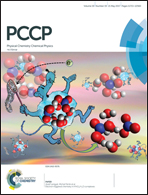Well incorporation of carbon nanodots with silicon nanowire arrays featuring excellent photocatalytic performances†
Abstract
Recently, silicon (Si) nanowires have been intensively applied for a wide range of optoelectronic applications. Nevertheless, rare explorations considering the photodegradation of organic pollutants based on Si nanowires were performed, and they still require vast improvement, in particular for their degradation efficiency. In this study, broad-band and high efficiency photocatalytic systems were demonstrated through the good incorporation of Si nanowires with highly fluorescent carbon nanodots. The photodegradation rate of these intriguing heterostructure arrays under a 580 nm light illumination is approximately 6 times higher than that of sole Si nanowires, and more than 3.6 and 4.5 times higher than that of Si nanowire incorporated with silver and gold nanoparticles, respectively. Optimizing the luminescent behaviors of carbon nanodots leads to the involvement of multiple light sources that activate the photoexcitation of carriers within the Si nanowires. This feature was further elucidated by examining the corresponding photocurrents under light illumination, which presents currents 1.9 times higher than those with the sole Si nanowires. In combination with excellent wettability with dye solutions, the present heterostructured nanowire arrays have promised the robust photocatalytic capability with retained efficiency after cycling uses, which may open up unique opportunities for future pollutant detoxification and wastewater treatment.

- This article is part of the themed collection: 2017 PCCP HOT Articles


 Please wait while we load your content...
Please wait while we load your content...